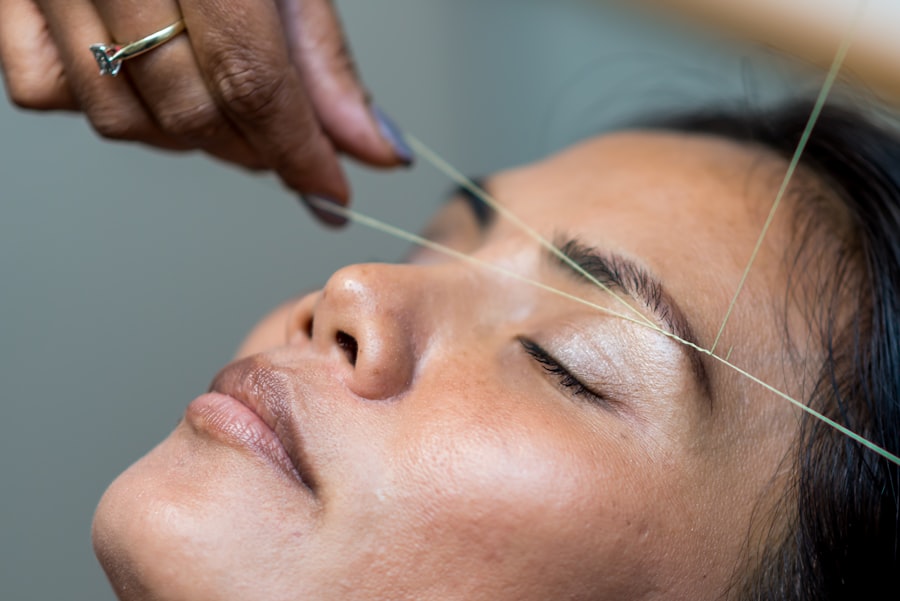Diode laser technology has revolutionized various fields, particularly in the realm of aesthetic treatments. At its core, a diode laser is a semiconductor device that emits light when an electric current passes through it. This light is concentrated and can be precisely controlled, making it an ideal tool for various applications, including hair reduction.
The wavelength of the light emitted by diode lasers typically ranges from 800 to 810 nanometers, which is particularly effective for targeting melanin in hair follicles. This specificity allows for efficient hair removal while minimizing damage to the surrounding skin. As you delve deeper into the mechanics of diode lasers, you will discover that they operate on the principle of selective photothermolysis.
This means that the laser energy is absorbed by the pigment in the hair, leading to the destruction of the hair follicle without harming the surrounding tissue. The technology has advanced significantly over the years, with modern diode lasers equipped with cooling systems to enhance comfort during treatment. Understanding these fundamentals can help you appreciate the effectiveness and safety of diode laser hair reduction.
Key Takeaways
- Diode laser technology uses a semiconductor to produce a concentrated beam of light for hair reduction treatments.
- The diode laser works by targeting the melanin in the hair follicle, heating it up and destroying the hair growth cells.
- The benefits of diode laser for hair reduction include precision targeting, fast treatment times, and long-lasting results.
- Diode laser treatment is generally safe with minimal risk of side effects when performed by a qualified and experienced professional.
- Patients can expect some mild discomfort during diode laser hair reduction, but numbing creams can be used to minimize any pain.
How Diode Laser Works for Hair Reduction
When you undergo diode laser hair reduction, the process begins with a thorough consultation to assess your skin type, hair color, and overall suitability for the treatment.
The laser energy penetrates the skin and is absorbed by the melanin in the hair follicles.
This absorption generates heat, which effectively damages the follicles and inhibits future hair growth. The efficiency of diode lasers lies in their ability to treat multiple hair follicles simultaneously. This not only speeds up the process but also ensures that larger areas can be covered in a single session.
Depending on your hair type and growth cycle, multiple sessions may be required to achieve optimal results. The treatment is generally well-tolerated, with many patients describing it as a sensation similar to a rubber band snapping against the skin. The cooling mechanisms integrated into the device further enhance comfort, making it a popular choice for those seeking long-term hair reduction solutions.
The Benefits of Diode Laser for Hair Reduction
One of the most significant advantages of diode laser hair reduction is its effectiveness across a wide range of skin tones and hair types. Unlike some other hair removal methods that may be less effective on darker skin or lighter hair, diode lasers are designed to target melanin specifically. This means that whether you have dark, coarse hair or finer strands, you can expect satisfactory results.
Additionally, diode lasers can treat larger areas more quickly than traditional methods like electrolysis or waxing, making them a time-efficient option. Another benefit worth noting is the long-term cost-effectiveness of diode laser treatments. While the initial investment may seem higher than other hair removal methods, such as shaving or waxing, the results are more permanent.
Many individuals find that after completing their recommended sessions, they experience significant reductions in hair growth, leading to less frequent maintenance and lower overall costs in the long run. Furthermore, diode laser treatments are less painful than many alternatives, allowing you to enjoy a more comfortable experience while achieving your desired results.
The Safety of Diode Laser Treatment
| Metrics | Results |
|---|---|
| Adverse Effects | Low incidence of adverse effects |
| Pain Level | Minimal discomfort reported by patients |
| Effectiveness | High success rate in treating various conditions |
| Recovery Time | Shorter recovery time compared to traditional treatments |
Safety is a paramount concern when it comes to any cosmetic procedure, and diode laser hair reduction is no exception. The technology has been extensively studied and is considered safe for most individuals when performed by qualified professionals. One of the key safety features of diode lasers is their ability to selectively target hair follicles without damaging surrounding skin tissue.
This precision minimizes the risk of burns or other adverse effects commonly associated with less advanced hair removal methods. Before undergoing treatment, it’s essential to discuss your medical history and any skin conditions with your practitioner. Certain factors, such as recent sun exposure or specific medications, may affect your eligibility for diode laser treatments.
However, when performed correctly and under appropriate conditions, diode laser hair reduction boasts a low incidence of side effects. Common post-treatment reactions may include mild redness or swelling in the treated area, but these typically resolve quickly and can be managed with simple aftercare measures.
What to Expect During Diode Laser Hair Reduction
As you prepare for your diode laser hair reduction session, it’s important to have realistic expectations about what will occur during the treatment. Upon arrival at the clinic, you will likely be asked to remove any lotions or products from your skin to ensure optimal laser absorption. Your technician may apply a topical anesthetic to enhance comfort during the procedure, although many patients find that this step is unnecessary due to the built-in cooling features of modern devices.
During the treatment itself, you can expect a series of quick pulses as the laser targets each hair follicle. The duration of your session will depend on the size of the area being treated; smaller areas like the upper lip may take just a few minutes, while larger areas like the legs could take up to an hour or more. Afterward, you may notice some redness or swelling in the treated area, but this should subside within a few hours.
Your technician will provide specific aftercare instructions to ensure optimal healing and results.
Who is a Good Candidate for Diode Laser Hair Reduction

Diode laser hair reduction is suitable for a broad range of individuals; however, certain factors can influence your candidacy for this treatment. Generally speaking, those with darker hair and lighter skin tend to achieve the best results due to the contrast between hair pigment and skin tone. However, advancements in technology have made it possible for individuals with darker skin tones to benefit from diode laser treatments as well.
It’s essential to consult with a qualified practitioner who can evaluate your unique situation and determine if diode laser hair reduction is right for you. Factors such as hormonal imbalances or certain medical conditions may affect your eligibility or results. Additionally, if you are pregnant or have recently undergone tanning treatments, it may be advisable to postpone your sessions until it is safe to proceed.
The Cost of Diode Laser Hair Reduction
When considering diode laser hair reduction, understanding the financial aspect is crucial. The cost of treatment can vary widely based on several factors, including geographic location, clinic reputation, and the size of the area being treated. On average, you might expect to pay anywhere from $200 to $500 per session for smaller areas like underarms or bikini lines, while larger areas such as legs or backs may range from $600 to $1,200 per session.
While these prices may seem steep at first glance, it’s important to consider them in context. Unlike temporary methods such as shaving or waxing that require ongoing expenses, diode laser treatments offer long-term results that can ultimately save you money over time. Many clinics also offer package deals or financing options that can make treatment more accessible and manageable within your budget.
Maintenance and Aftercare for Diode Laser Hair Reduction
After completing your diode laser hair reduction sessions, proper maintenance and aftercare are essential for achieving optimal results. While many individuals experience significant reductions in hair growth after their initial treatments, some maintenance sessions may be necessary over time to address any regrowth or fine hairs that may appear. Typically, these maintenance sessions are less frequent than initial treatments and can be scheduled based on your individual needs.
In terms of aftercare, it’s crucial to follow your technician’s recommendations closely. This may include avoiding sun exposure for a period following treatment and using sunscreen on treated areas to protect your skin from UV damage. Additionally, you should refrain from using harsh skincare products or engaging in activities that could irritate your skin for at least 24 hours post-treatment.
By adhering to these guidelines and maintaining open communication with your practitioner, you can ensure that your results remain effective and long-lasting. In conclusion, diode laser technology represents a significant advancement in hair reduction methods, offering effective and safe solutions for individuals seeking long-term results. By understanding how this technology works and what to expect during treatment, you can make informed decisions about whether diode laser hair reduction is right for you.
With its numerous benefits and relatively low risk profile, this innovative approach continues to gain popularity among those looking for efficient ways to manage unwanted hair growth.
If you are considering diode laser hair removal, it is important to understand that it is actually permanent hair reduction, not removal. This means that while the treatment can significantly reduce the amount of hair in a specific area, it may not completely eliminate all hair growth. For more information on this topic, you can read the article “Permanent Hair “Reduction” Not “Removal”” on the In Laser Hair Removal website.
FAQs
What is a diode laser?
A diode laser is a type of laser that produces a concentrated beam of light. It is commonly used in medical and cosmetic procedures, including hair removal.
How does a diode laser work for hair removal?
During a hair removal treatment, the diode laser emits a specific wavelength of light that is absorbed by the pigment in the hair follicles. This light energy is converted to heat, which damages the hair follicle and inhibits future hair growth.
Is diode laser hair removal permanent?
While diode laser hair removal is often marketed as “permanent hair reduction,” it is important to note that it may not completely eliminate all hair. Some hair may grow back, but it is typically finer and lighter in color.
What areas of the body can be treated with a diode laser?
Diode laser hair removal can be used to treat various areas of the body, including the legs, arms, underarms, bikini area, face, and back.
Is diode laser hair removal safe?
When performed by a trained and experienced professional, diode laser hair removal is generally considered safe. However, there are potential risks and side effects, such as skin irritation, redness, and changes in skin pigmentation.
How many sessions are typically needed for diode laser hair removal?
The number of sessions needed for diode laser hair removal varies depending on factors such as the individual’s hair type, skin color, and the treatment area. On average, multiple sessions spaced several weeks apart are required to achieve optimal results.







